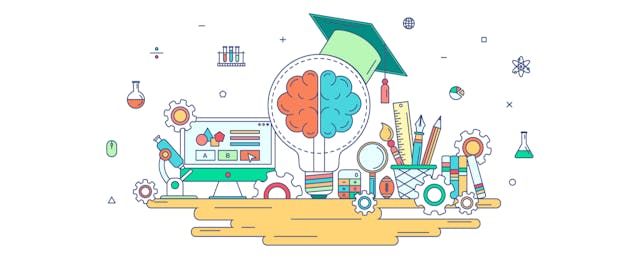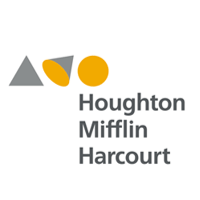They come from different education and career backgrounds, and they work in distant divisions at Houghton Mifflin Harcourt. But after only a few minutes of conversation, it’s abundantly clear that Kyra Donovan and Dr. Julie Miles share a passion for learning and a strong conviction that assessment is essential to creating the best educational outcomes for students of all abilities.
Kyra Donovan, an Associate Partner at Houghton Mifflin Harcourt’s International Center for Leadership in Education (ICLE), comes to the table with more than 30 years of experience in public education. She has served as a classroom teacher, principal and central office administrator. During that time, she came to see the importance of having a roadmap for curriculum and assessments so that teachers and administrators had common language and benchmarks for success. At ICLE, Donovan works closely with teachers and administrators to help them implement and interpret assessments in the classroom.
Dr. Julie Miles decided that she could better serve the educational world from outside of the classroom. She pursued a PhD in Educational Research, Measurement and Evaluation. Today, she is the Senior Vice President of Learning Sciences, Measurement and Data Analytics at Houghton Mifflin Harcourt. She leads four separate teams that focus on the sciences of learning, assessment design and creation, psychometric (measurement) research and accessibility of program content and assessments. In her 20 years in the field of assessment, Miles has worked on many of the widely-used assessment tools in the nation, including PARCC and many large-scale state summative assessments and growth measures.
An Assessment Overview
When it comes to assessment, HMH provides a spectrum of tools:
- Diagnostic: tools that help determine student needs so additional supports or interventions can be put in place
- Formative: more informal check-ins—quizzes, questions from the front of the room, or even chats with students—that assess how students are absorbing material and allow teachers to adjust lessons on the fly
- Summative: the more comprehensive tools used to measure what a student has learned at the end of a school term, such as exams and final projects
- Benchmark/Interim: a type of formative assessment given throughout the year that tracks how students are progressing in relation to curriculum standards/benchmarks
- Growth Measurements: tools to track students’ growth over time—typically three times a year (beginning, middle, end)—to determine whether they are progressing
Together, these tools help educators ensure that they are meeting curriculum standards effectively and in ways that are accessible for all of their students.
Miles explains that how you’re going to use the information collected informs which tool(s) would be best: “Kyra uses the words ‘fit for purpose’ because each type of assessment does have a purpose. It depends on the decisions that you're trying to support.”
Purposeful Assessment
At its core, assessment is about collecting, interpreting and using data. Donovan and Miles both emphasize purpose as a key starting point.
For Donovan, it comes down to the why: “School districts have a lot of data, typically, from a lot of different places. We are data-rich, but there are many times when you ask leaders or teachers, ‘So why are you doing this assessment? What are you going to do with it?’ They look at you and say, ‘I don't know. We've always done it.’ The purpose of assessment is to figure out what insights you can gather and then take action based on the results. They monitor whether students are learning or not. Because I could be the best teacher, I may have this stellar lesson, but if my students aren't learning the content or the standard I'm teaching, it really doesn't matter.”
Miles agrees but brings her own perspective to using the data: “Customers often don't know how to convert the assessments into information and then convert that information into insights and action. And that is the part of my job that I love. I love sitting down with data in front of the customer and showing them what it means. Not to me, but what does it mean to you, to your students, to your teachers and to your classroom? Because that's why I build assessments. I don't build them to fill time. I build them to help optimize teaching and learning; that's my team's mission statement. If they look at me and say, ‘Oh, this doesn't help me at all,’ I respond, ‘Okay, but what can I do that will?’ I start from scratch again.”
While the two have slightly different approaches, their objective is the same: quality educational experiences. Ongoing assessments help teachers ensure that their lessons are tied to standards and, most importantly, that they are also effective in achieving the intended student outcomes. Donovan drives this point home, “You cannot wait until you get to the summative assessment and say, ‘Oh, shoot.’ A kid’s only a third grader—or a freshman—one time. You’ve got to do everything you can.”
Education and Assessment in the Age of COVID-19
Assessments have long played a central role in traditional education, but the COVID-19 pandemic has accelerated the need for smarter, faster and more seamless options. Both Miles and Donovan talk of the challenges faced by entire school communities as instructional time has been lost or compromised, students have fallen behind in benchmarks, social-emotional well-being has taken a front seat, and educators are coping with ever-changing classroom environments. There are also growing inequities for students of color, those with different learning needs and those in lower socio-economic brackets. The pressure is on to meet their needs before it’s too late.
“We know that teachers are not going to have the same amount of time,” Donovan explains. “And we also know that kids are going to come back with gaps we've probably never seen before. We want teachers to teach the grade-level content, but they cannot go back and teach everything that a student may have missed. We have to figure out how to have more of a vertical alignment, so to speak, between grade levels around what standards are most critical.”
This line of thinking led ICLE and HMH to develop a resource called Bridge and Grow Pathways, a roadmap to help teachers prioritize learning outcomes. The aim is to focus on essential areas of learning, as well as tap into outcomes that may have been compromised the previous year. If students are struggling in an area, Bridge and Grow can help teachers identify the standards they may have missed.
Beyond that, Miles and her team have been hard at work making assessments easier and faster for teachers. One example is the computer-adaptive HMH Growth Measure tool. Miles says that it takes only 75 percent (or even 50 percent) of the time that other growth measures and diagnostics take, allowing teachers to get essential information without sacrificing precious instructional time.
The Future of Assessments
Although the pandemic has disrupted learning and assessment for a time, Miles keeps her eyes on the future. And it’s mind-bending stuff. While many educators are still catching up with new platforms and technology, Miles is talking about stealth assessments, shifting from textbook-based learning and using machine learning (AI) to support teachers’ decision-making on what comes next for each specific student or how to group students for differentiation.
In reference to the Bridge and Grow platform, she says, “Those core learning objectives are based on fundamental skills that are required in order for a student to advance and matriculate across the grades from kindergarten to high school. My team has created an underlying learning progression—we call it a learning spine—and I'm connecting thousands of skills to each other so that every single piece of content that we produce at HMH can be tagged to a very specific skill or a set of skills. As a student interacts with a piece of content, I can track whether or not they have mastered that skill.”
The end goal is to develop integrated assessments that capture a student’s learning and growth without the stress or time requirements of formal tests. Not only that, but this type of system can create a holistic view of students and their entire learning journey so they can access custom experiences to meet individual needs.
Miles sums this up with a gleeful exclamation that reveals her enthusiasm for this field of work, “It’s fun. It's super sophisticated. It is no longer just writing multiple choice test questions. It is definitely not that!”



